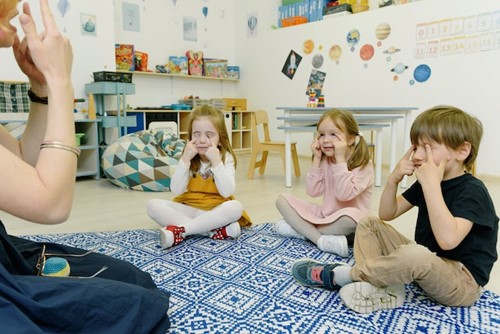Incorporating Sign Language in Your Baby’s Early Life Stages
In today’s diverse world, preschoolers can benefit from early exposure to different languages and communication styles. Sign languages, like ASL and BSL, are valuable language assets with several benefits.

Teaching sign language to young kids goes beyond learning signs and their corresponding meanings. It enhances their overall development, communication, motor, and memory skills while at the same time promoting cultural sensitivity.
In this guide, we will explore the transformative impact of introducing ASL to preschoolers and its advantages to their cognitive, social, and emotional development. Schools can opt for using an ASL interpreter in events to ensure all children can participate and benefit from their educational journey.
1. Emotional Benefits
ASL enables all kids to express themselves better, even if they suffer from speech, hearing, or communication-related disorders. This can boost their self-confidence and emotional intelligence, helping them socialise as well. It especially provides an alternative means of communication for children who struggle to communicate, providing them with a channel through which they can convey their feelings, emotions, wants, and needs. In essence, sign language further enables them to reduce their frustration, leading to improved emotional regulation and a more positive outlook on life.
2. Social Benefits
Another major benefit of sign language is how it enhances emotional intelligence by exposing kids to the Deaf community and their communication styles. This acts as a catalyst for understanding others’ diverse experiences and perspectives, fostering comfortable and inclusive interactions with Deaf or hard-of-hearing peers.
Consequently, this means of expression opens up avenues for lifelong friendships and meaningful connections across language barriers. By sharing a common language, kids can communicate more comfortably, strengthening their ties and reducing the isolation some Deaf or hard-of-hearing students might experience. Communication is also crucial in aiding the development of kids so that they become thriving members of society instead of adopting harmful and reclusive practices that may lead to devastating consequences, like criminal behavior, in the future.
By equipping kids with the ability to communicate in ASL or BSL, they can bridge gaps that might hinder effective communication and social engagement. Sign language also teaches kids to be more observant of body language and other non-verbal cues. This enhances their ability to understand, respond effectively, learn, and pick up new signals from people from different cultural and psychological backgrounds.
3. Cognitive Benefits
Learning more than one language can positively impact kids' language development, leading to broader vocabulary and enhanced grammar skills. Children's brains indulge in training for enhanced memory and flexibility in learning the unique motor movements required for sign language. Producing and understanding the precise handshapes, gestures, and facial expressions involved in sign language builds up focused attention and coordination – qualities that aid people from various walks of life.
By engaging in sign language learning and communication, children develop cognitive abilities not bound only to language proficiency. The visual nature of these languages challenges and sharpens their cognitive processes, enhancing problem-solving skills and mental agility and encouraging appreciation for visual-spatial information.
Conclusion
Teaching sign language to preschoolers offers many transformative benefits that span their cognitive, social, and emotional development. By embracing it as an essential part of early education, we create an inclusive and supportive environment that nurtures children's communication skills, cultural awareness, and overall growth.